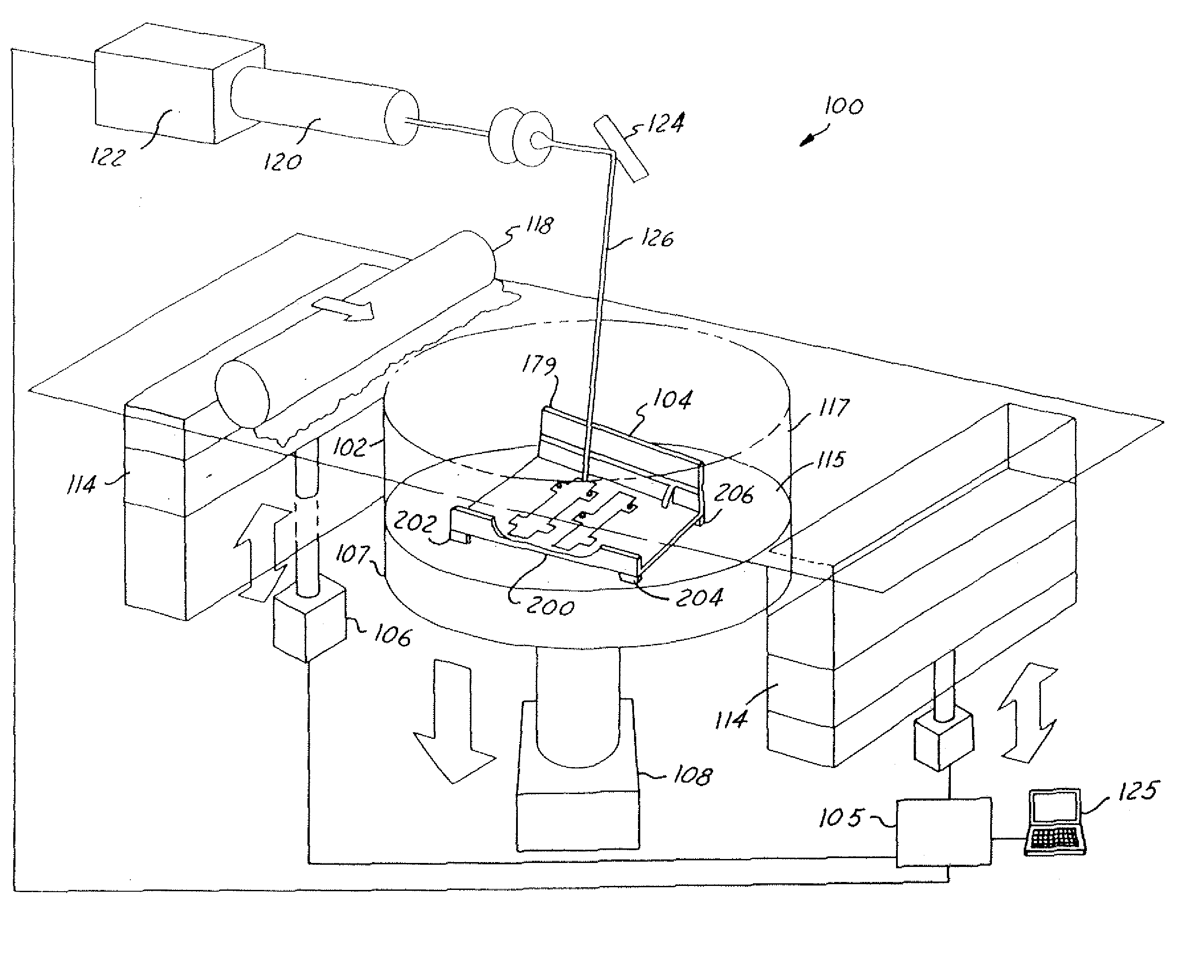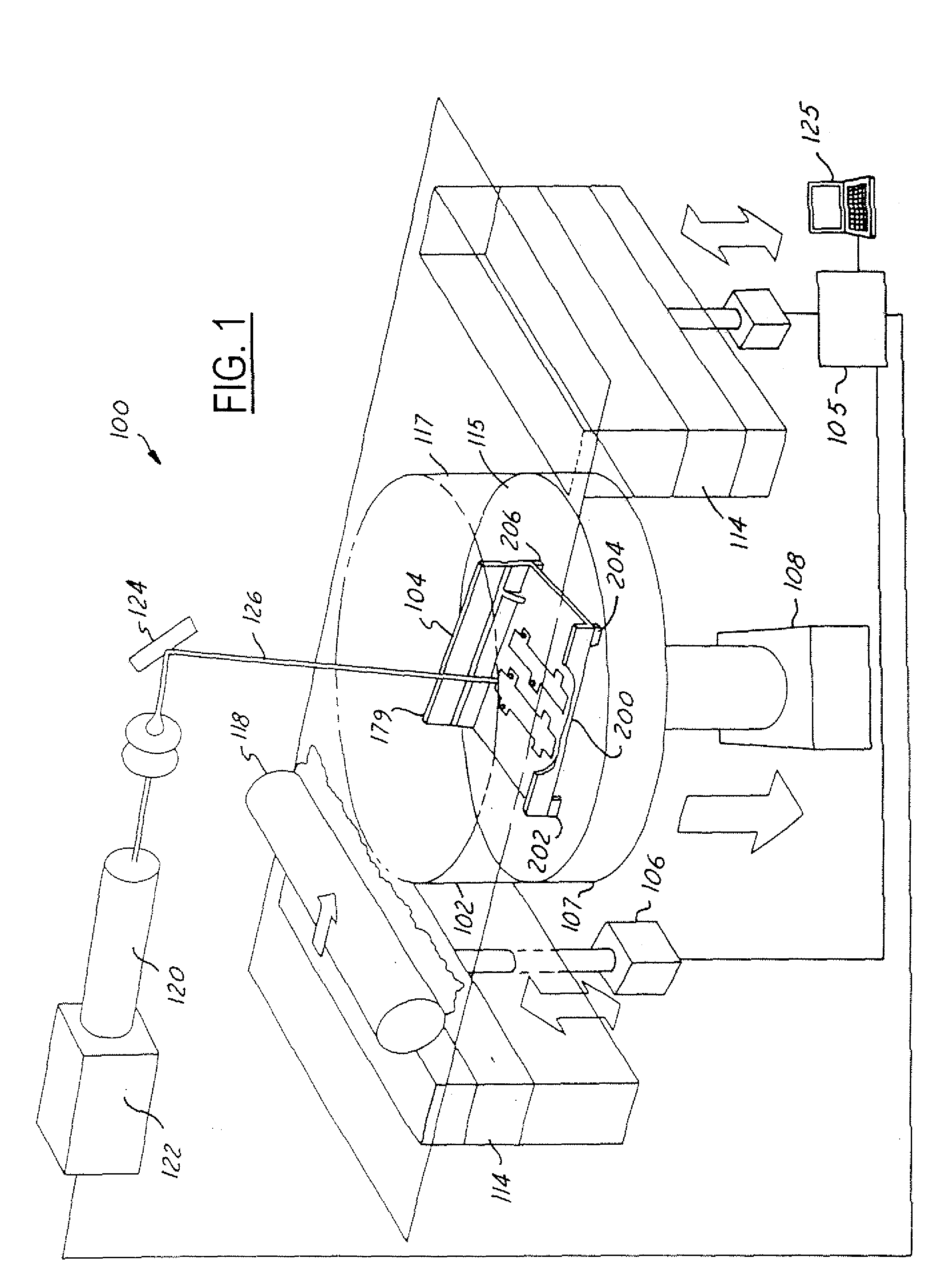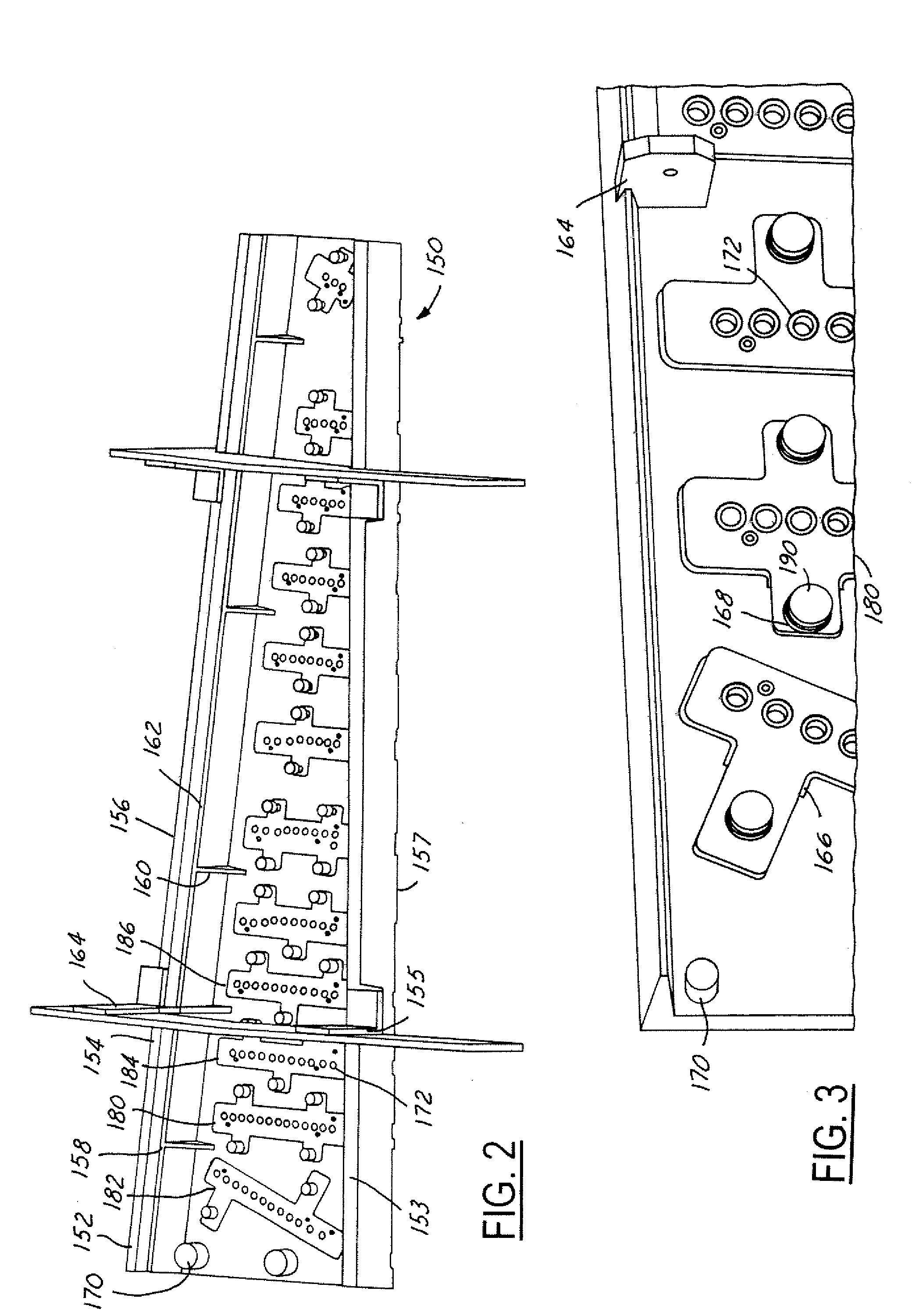Joint Design For Large SLS Details
a technology of sls details and joint design, applied in the field of tooling systems and processes, can solve the problems of inefficiency of physical master models, cost of master models, design, modeling and surfacing, etc., and achieve the effect of increasing the versatility of sinter systems and reducing costs and cycle tim
- Summary
- Abstract
- Description
- Claims
- Application Information
AI Technical Summary
Benefits of technology
Problems solved by technology
Method used
Image
Examples
Embodiment Construction
[0029] The present invention is illustrated with respect to a sintering system particularly suited to the aerospace field. The present invention is, however, applicable to various other uses that may require tooling or parts manufacture, as will be understood by one skilled in the art.
[0030]FIG. 1 illustrates a selective laser sintering system 100 having a chamber 102 (the front doors and top of chamber 102 not shown in FIG. 1, for purposes of clarity). The chamber 102 maintains the appropriate temperature and atmospheric composition (typically an inert atmosphere such as nitrogen) for the fabrication of a tool section 104. The system 100 typically operates in response to signals from a controller 105 controlling, for example, motors 106 and 108, pistons 114 and 107, roller 118, laser 120, and mirrors 124, all of which are discussed below. The controller 105 is typically controlled by a computer 125 or processor running, for example, a computer-aided design program (CAD) defining a...
PUM
| Property | Measurement | Unit |
|---|---|---|
| area | aaaaa | aaaaa |
| thickness | aaaaa | aaaaa |
| areas | aaaaa | aaaaa |
Abstract
Description
Claims
Application Information
 Login to View More
Login to View More - R&D
- Intellectual Property
- Life Sciences
- Materials
- Tech Scout
- Unparalleled Data Quality
- Higher Quality Content
- 60% Fewer Hallucinations
Browse by: Latest US Patents, China's latest patents, Technical Efficacy Thesaurus, Application Domain, Technology Topic, Popular Technical Reports.
© 2025 PatSnap. All rights reserved.Legal|Privacy policy|Modern Slavery Act Transparency Statement|Sitemap|About US| Contact US: help@patsnap.com



